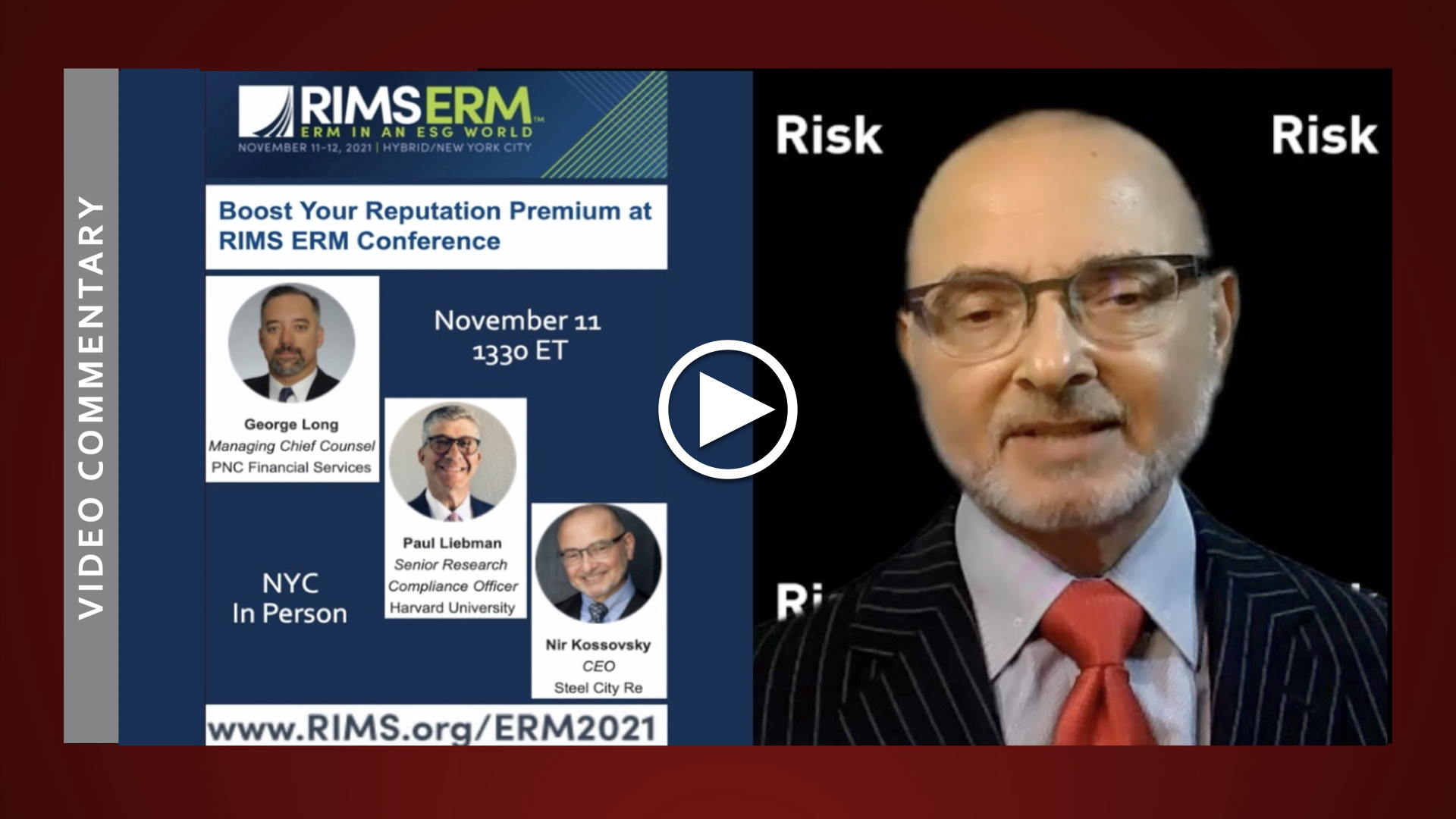“Please join me and my colleagues, George Long of PNC Financial Services and Paul Liebman of Harvard University, in an exploration of the nuts and bolts of solving the “ERM, ESG and the Reputation Premium” challenge.”
RIMS ERM Conference
November 11, 2021
“Dr. Kossovsky would reliably inform me that reputation premium…is possibly the biggest asset that well-governed companies actually have.”
Click on View Video (below) for more contents (No Paywall).
Every stakeholder group expects companies, their leadership, and their boards to have a credible plan to head off ESG and Reputation risk.
Click on the highlighted text for a broader view of reputation risk case studies and reputation premium; or to explore additional articles by Steel City Re here, mentions of Steel City Re here, and comments on newsworthy topics by Steel City Re here.
Reputation is Mission-Critical
Mitigating the Hazards of ESG-Linked Enterprise Risk. A management program for ethics and compliance can forestall prosecution and mitigate fines. Similarly, oversight of “mission- critical” issues can forestall securities litigation. A program for reputation resilience, comprising both risk management and insurance (reinsurance)-authenticated oversight for all that is mission-critical, can create value in many ways. To this end, Steel City Re offers a Reputation Resilience Program.
Having a robust Reputation Resilience Program in place offers, amongst other benefits:
- Protection for the company, its staff, executives, and board from litigation and regulatory challenges
- Improved governance processes and better enterprise risk management protocols; i.e., measuring reputational risk
- Establishment of an agile operating, communications, and decision-making team, with clear roles and responsibilities, trained and ready to handle all reputational threats; i.e., a reputation risk management framework
- Proactive management of risks that could give rise to delays or derailing concerns around new product and strategic partnership launches
- Captured behavioral economic value from stakeholders; i.e., value of reputation
- Reduced costs of debt and risk transfer while boosting equity value; i.e., boosting reputational value
A hazard of reputation risk is a lurking gap between stakeholder expectations and reality. Another hazard is the emotional intensity associated with expectations. The peril is anger from disappointed stakeholders. This video and this written summary explain the behavioral economic features of the many perils of reputation risk.
Mitigating risk strategically through expectation management and operational adjustments evinces thoughtful management and dutiful governance. Financing such risks evinces prudence, and doing so publicly enables stakeholders to appreciate and value the effort. These comprise the core of Steel City Re’s professional services.
One Question
Mitigating the Hazards of ESG-Linked Enterprise Risk. ESG-linked reputation risks are prevalent and material. Are reinsurance and insurance for ESG-linked reputation risk part of your strategy?

